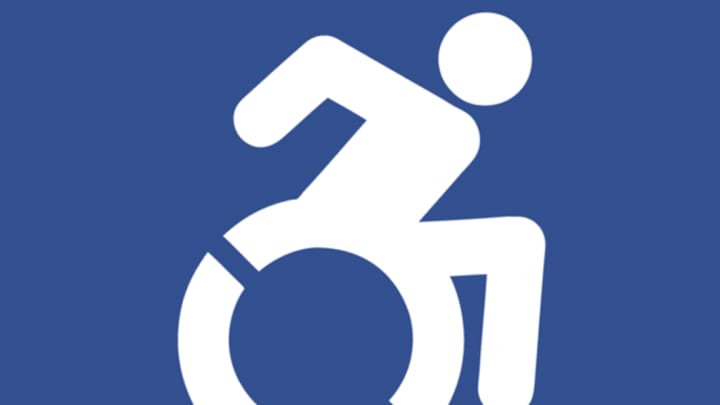When’s the last time you looked—really looked—at a street sign? Icons and symbols are all around us, so familiar that we barely even notice them. But whether or not we think about it, those symbols are messages. And activists say one of those messages, the disability access sign, is overdue for an update.
Take a look at the current International Symbol of Access, which depicts a person sitting in a wheelchair. Not moving, not acting, just sitting. This message (which could be read as: disabled person = passive object + wheelchair) is both problematic and outdated, according to activists from the Accessible Icon Project.
Sara Hendren and Brian Glenney created an alternative symbol depicting a person in motion in a wheelchair. At first, they disseminated the image through a sort of guerilla art activism, slapping new icon decals over the old symbol on public signs around Boston.
“We wanted this icon-action to be the occasion for asking questions about disability and the built environment, in the largest sense,” Hendren writes on the project’s website. “Who has access—physically, yes, but moreover, to education, to meaningful citizenship, to political rights? Framing this work as a street art campaign allowed it to live as a question, rather than a resolved proposition.”
Before long, the campaign had drawn media attention, and Hendren and Glenney realized their project could make big changes if they went mainstream. They teamed up with a graphic designer to make a new icon that met international guidelines.
From its grassroots beginnings, the new dynamic icon has become a real contender to replace the old symbol. New York legislators have already adopted the person-in-motion icon, and Connecticut may be next. A bill introduced by Governor Dan Molloy suggests discarding the old symbol and instead marking public signs with “ … a dynamic character leaning forward with a sense of movement.”
It’s worth noting that the symbol has some limitations. Not all people with disabilities use wheelchairs; in fact, most don’t. Many disabilities are invisible, which can lead to extremely unpleasant misunderstandings in parking lots. But designers are making inroads there, too: this past summer, Washington, D.C.’s public transit unveiled awesome signs encouraging awareness of invisible disabilities.
Together, this new generation of signs and symbols are moving us towards a more conscientious future.
[h/t Quartz]
